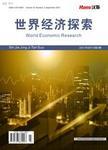版权所有:内蒙古大学图书馆 技术提供:维普资讯• 智图
内蒙古自治区呼和浩特市赛罕区大学西街235号 邮编: 010021

作者机构:同济大学经济与管理学院上海
出 版 物:《世界经济探索》 (World Economic Research)
年 卷 期:2025年第14卷第1期
页 面:39-50页
学科分类:12[管理学] 02[经济学] 0202[经济学-应用经济学] 1202[管理学-工商管理] 1201[管理学-管理科学与工程(可授管理学、工学学位)] 020205[经济学-产业经济学]
主 题:物流业 碳排放脱钩 驱动因素分析 广义迪氏指数分解法
摘 要:物流行业是我国三大碳排放源之一,研究省际物流碳排放的脱钩效应及驱动因素对推动物流业低碳发展具有重要意义。基于Tapio脱钩模型和GDIM因素分解法探究中国物流业的发展与碳排放之间的脱钩效应并对其驱动因素进行分解。结果表明:2006~2021年,中国物流业整体脱钩状况以“弱脱钩为主,脱钩状态良好。物流业碳排放量呈现出东部高,中西部低的特点;其中东部脱钩指数波动较大,中西部脱钩指数较为稳定。对于驱动因素的贡献度,物流行业总产值和能源消耗量是阻碍物流业碳排放脱钩的两个主要因素,物流业发展水平则是实现物流业碳排放脱钩的最大推力。The logistics industry is one of the three major sources of carbon emissions in China, and the study of the decoupling effect and driving factors of inter-provincial logistics carbon emissions is of great significance in promoting the low-carbon development of the logistics industry. Based on the Tapio decoupling model and the GDIM factor decomposition method, we investigate the decoupling effect between the development of China’s logistics industry and carbon emissions and decompose the driving factors. The results show that from 2006 to 2021, the overall decoupling status of China’s logistics industry is mainly “weak decoupling, and the decoupling status is good. Carbon emissions from the logistics industry are high in the east and low in the central and western parts of the country;the decoupling index fluctuates greatly in the east, while the decoupling index in the central and western parts of the country is more stable. In terms of the contribution of driving factors, the gross output value and energy consumption of the logistics industry are the two main factors hindering the decoupling of carbon emissions from the logistics industry, while the level of development of the logistics industry is the biggest push to realize the decoupling of carbon emissions from the logistics industry.